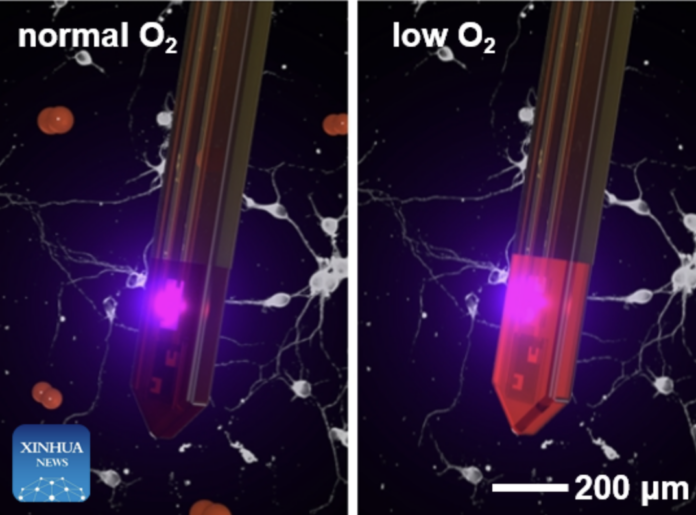BEIJING, Jan 27 – Chinese scientists have developed a miniature probe that is wireless and dynamically tracks oxygen levels in the deep brain, providing a promising tool for brain disease monitoring.
The implantable probe, about 300 microns in diameter, comprises a light-emitting diode and a photodetector, and is coated with a phosphorescent film highly sensitive to oxygen, according to the findings published in the journal Nature Photonics this week.
The probe works by emitting phosphorescence and measuring the oxygen levels according to the light brightness, which would decrease with the rise of the oxygen partial pressure, a key indicator reflecting brain oxygen levels, said Sheng Xing, one of the paper’s corresponding authors and an associate professor at Tsinghua University.
“When a hypoxia in brain tissue happens, the probe would emit a strong light,” he added, noting that its response time is only less than one second.
The wireless probe has been confirmed efficient after continuously monitoring the oxygen partial pressure in the deep brain of freely moving rodents, like mice. It could capture their cerebral hypoxia state in various scenarios, including an acute ischaemia.
The findings are expected to serve as a promising health care tool for patients with epilepsy, brain tumors, stroke, and intracranial trauma in the future, Sheng said.
The study was conducted by researchers from Tsinghua University in collaboration with other Chinese research institutions, including the Xuanwu Hospital affiliated to Capital Medical University and the Beijing Institute of Technology.



















